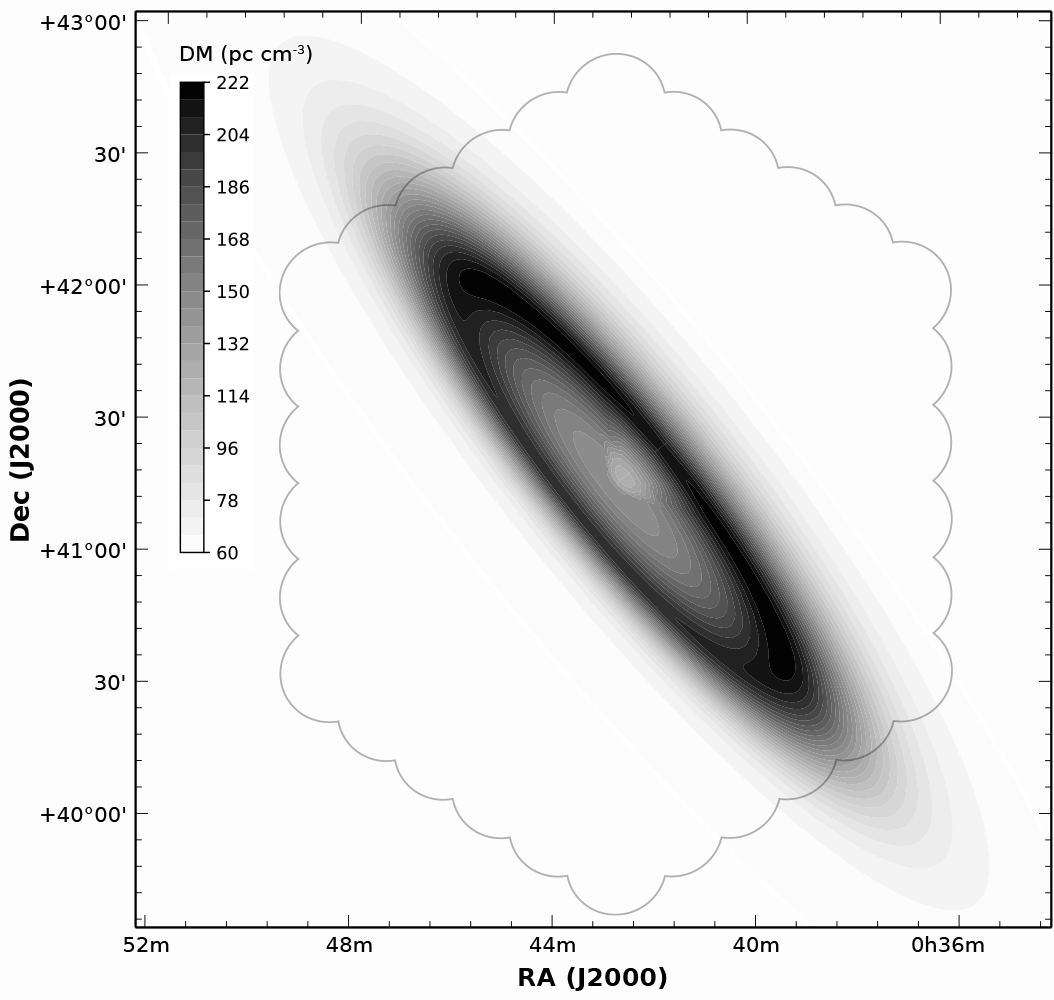| Description: | What do engineers who work with long-distance optical fiber data transport, have in common with astronomers who study fast transients? They both need to watch out for dispersion. The speed of light is only c in vacuum. In any other medium it will be lower, and especially so at longer wavelengths. In fiber optics, the medium is the glass. For the pulses emitted by fast radio bursts (FRBs) and pulsars, the medium consists of those lonely free electrons that float between all the stars and galaxies. This medium is what normally we call "the vacuum of space" and there is only a few handful of electons per liter of space. But the sight lines are very long, so the delays add up (as shown in this animation). And so, for LOFAR, the effect may end up being so strong that intrinsically bright pulses get smeared out within even a single LOFAR channel.
For that reason our paper on searching for pulsars in M31, which appeared on 28 Jan, contains a model for the free electrons within M31 (the Image, above). Potentially, the medium within M31 was already so dense (a high "DM", as noted on the gray scale bar) that the radio pulsar emission would be much blurred before it could escape the Andromeda Galaxy. Fortunately we conclude that the dispersive delay introduced in that galaxy is not enough to blind LOFAR for pulsars there. |

